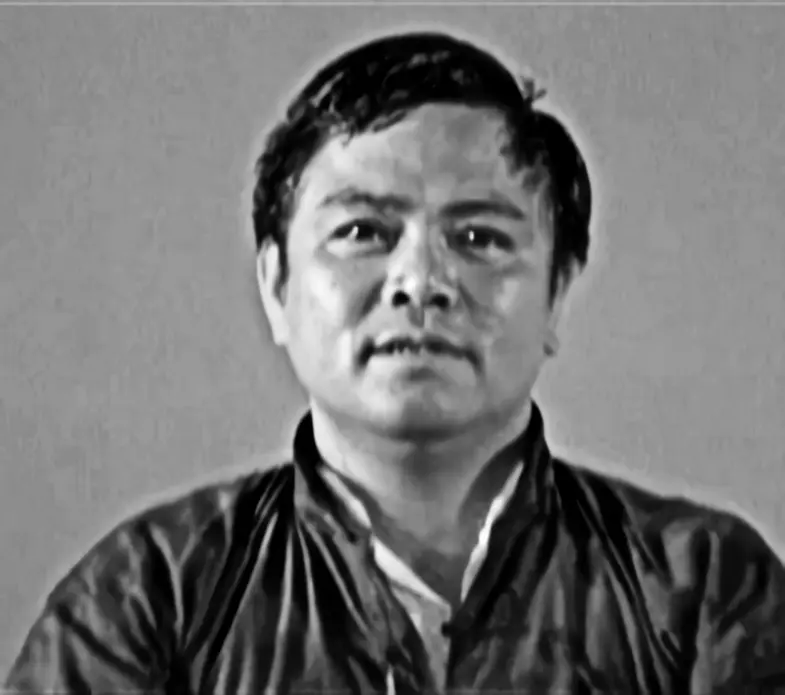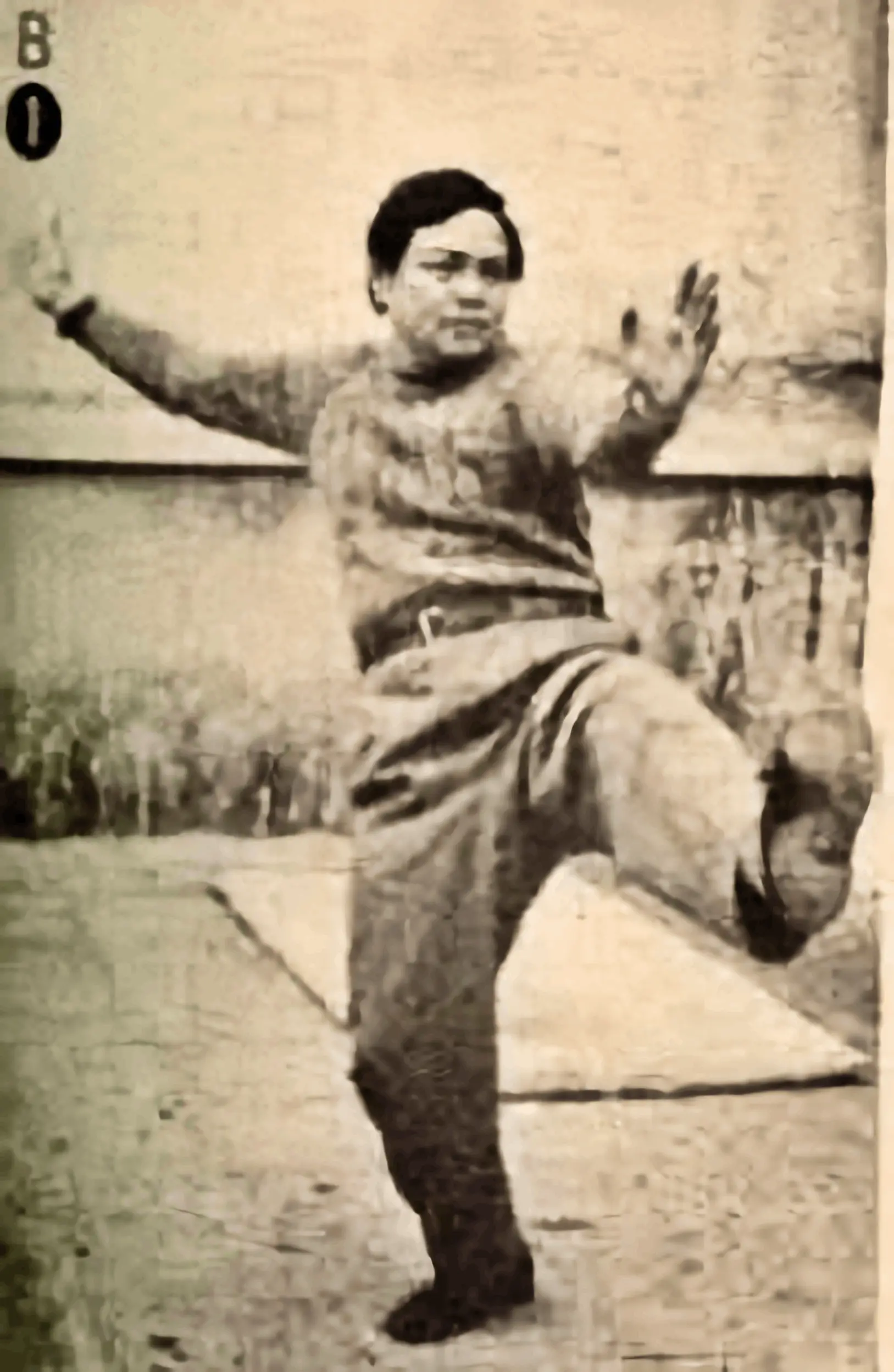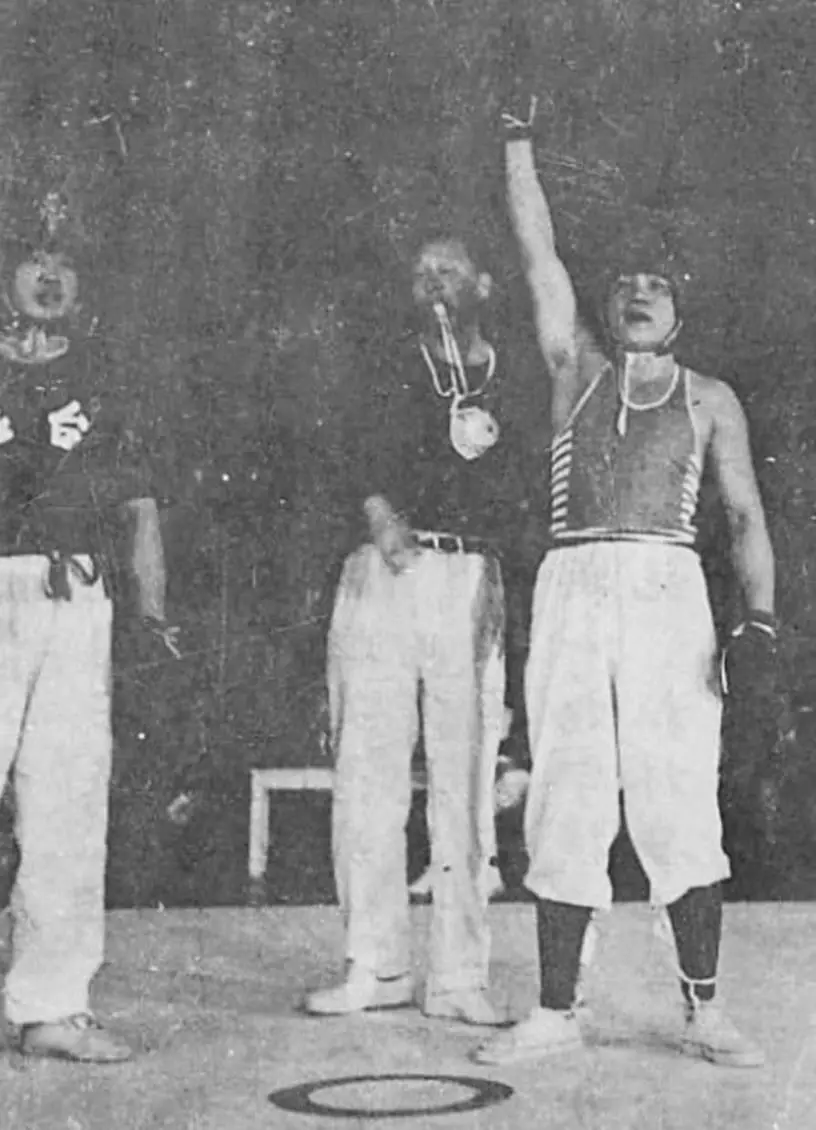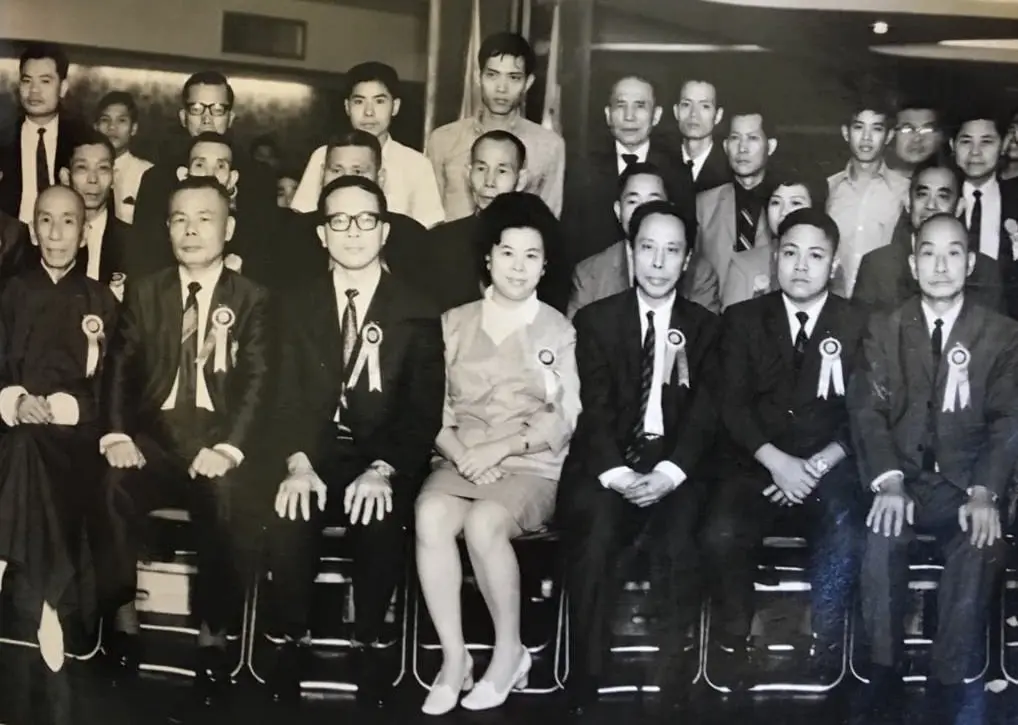
Cheng Tin-hung

Cheng demonstrating Turn Around and Kick with the Heel
Wudang style Tai Chi Chuan originates from Cheng Tin-hung* (Zheng Tianxiong) (1930–2005), who was based in Hong Kong.
Cheng Tin-hung and the Rise of Wudang Tai Chi Chuan
• 1930: Cheng Tin-hung was born in San Xiang village in Guangdong Province.
• Cheng Tin-hung learned Southern boxing from his father, Cheng Min-cheung, which they practised after finishing their chores.
• After his father’s death, Cheng Tin-hung continued to learn Nanquan from his grandfather, Cheng Lin, who was proficient in Southern boxing and taught it for a living.
• Cheng Tin-hung’s grandfather advised him to go to Hong Kong and train Tai Chi Chuan with his uncle, Cheng Wing-kwong,* so that he could teach wealthy people and become successful.
Cheng Wing-kwong trained with the Wu family in Hong Kong under Chiu Sau-chien,* who was a nephew of Wu Jian-quan, and became a top disciple, being one of only three “inside the door students” of Wu Jian-quan. He also trained with other masters as he was interested in other versions of sabre and pushing hands. Additionally, he learned several Qigong systems from a wandering Taoist. Cheng Wing-kwong went on to teach widely in Southeast Asia, particularly in Malaysia. Neither Cheng Wing-kwong nor his students ever produced any successful full contact fighters.
• Cheng Tin-hung began training with his uncle, learning a small to medium frame hand form. As a blood relative, he did not need to go through the Bai Shi initiation ceremony. Cheng Tin-hung trained daily, and his uncle taught him all he knew, including 20 of the 24 Yin and Yang Nei Gong and Xianjia Baduanjin (Immortal Family 8 Pieces of Brocade) Qigong exercises.
• 1946: Chiu Sau-chien told Cheng Wing-kwong about a skilled Tai Chi Chuan teacher called Qi Minxuan. Cheng Wing-kwong invited Qi to Hong Kong to teach his sons and Cheng Tin-hung in return for board and lodging.
Qi Minxuan was from Wen County, Hebei Dao in Henan Province. His Buddhist name was Zhi Meng (meaning Sagacious Elder). Qi was well-versed in the art of Tai Chi Chuan and Nei Kung, although he was not a professional master. After Qi’s family and lands were destroyed in the Japanese invasion of China in 1930, he became an itinerant teacher of Tai Chi Chuan.
Qi was taught by his father, Qi Kesan (who in turn was taught by Wu Quanyou, founder of the Wu style), but his main teacher was a Buddhist monk named Ching Yat (meaning Pure One). Ching Yat learned from a renegade soldier he befriended, called Wang Lan-ting. Wang sought refuge at a temple, where Ching Yat resided, after killing some Manchus. Wang was taught by Chen Keng-yun, the son of Chen Chang-xing, and later by Yang Lu-chan. Wang is known to have been an officer in the Manchu Imperial Guard and a top student of Yang.
• 1946: In midsummer, Qi Minxuan, perhaps in his fifties by then, arrived in Hong Kong to teach both Cheng Wing-kwong’s sons and Cheng Tin-hung.
As a teacher, Qi was harsh, punishing laziness, such as high stances, with a slap to the back of the head. Qi expected students to pay close attention and not require repeated explanations; if they made the same mistake twice, he would hit them.
Cheng Wing-kwong’s sons soon complained to their mother about Qi’s severity as a teacher, and she told them they need not continue, so Cheng Tin-hung was left to train with Qi on his own and eventually underwent the Bai Shi initiation ceremony with him.
• Cheng Tin-hung practised with Qi daily, often while wandering in the hills in rural Hong Kong, and developed a close relationship with him. Qi and Cheng Tin-hung spoke different dialects, so communication must have been difficult early on. Qi’s form was medium to large frame, and Cheng Tin-hung said his technique was so subtle that sometimes he could not follow him. Qi Minxuan showed applications for spear, sabre, and sword using tree branches and sticks. Qi did not practise or teach square form but did teach mirror and reverse form. Qi taught Cheng Tin-hung the complete syllabus, which differed from Cheng Wing-kwong’s and included all the conditioning exercises, 5 Element Arm, Running Thunder Hand, Gyrating Arms, Flying Flower Palm, 6 Secret Words, spear form, sabre/sword form differences, and Nei Gong additions.
• Qi thoroughly explained the Classics to Cheng Tin-hung, having mastered them from his father, Qi Kesan. He then had Cheng Tin-hung chant them while practicing the 24 Nei Gong exercises, which Qi had learned from Jing Yi.
• Qi Minxuan never claimed to Cheng Tin-hung that what he taught was Wu family Tai Chi Chuan. Qi Minxuan told Cheng Tin-hung that he was teaching him ‘Wudang Tai Chi Chuan’.
• 1948: In the first month of winter, Qi left Hong Kong, in the throes of civil war, as he felt he had to return to China to see what had become of his home and family in Wen County, Henan Province. Qi never returned. Cheng Tin-hung wrote to him but never received a reply.
• Cheng Tin-hung showed some of Qi Minxuan’s techniques to Cheng Wing-kwong, but he felt he was being taken advantage of, so he stopped.
• 1949: Cheng Tin-hung went with his uncle to visit Wu Gongyi and pushed hands with him, sweeping him to the ground. Wu Gongyi swore at him, and Cheng Tin-hung told him his Gong Fu was in his words, not his hands.
• 1950: Cheng Tin-hung established his Tai Chi Academy in Hong Kong and started teaching full time. He became known as the ‘Tai Chi Bodyguard’ because he would stand up for Tai Chi practitioners everywhere, with fist or weapon. Cheng Tin-hung taught the full syllabus from Qi Minxuan but also included elements from his uncle’s teaching, for example, square form, which originally came from Wu Jian-quan via his uncle but was modified by Cheng Tin-hung. The Hong Kong martial arts journalists called Cheng Tin-hung’s art ‘Practical Tai Chi Chuan’.
• 1956: Cheng Tin-hung and his students were featured in a Hong Kong movie called ‘How Fong Tong-geng Thrice Tricked the Unruly Girl’. Cheng Tin-hung and his students can be seen practising hand form, applications, and pushing hands drills. See the movie here
• 1957: Cheng Tin-hung entered the Hong Kong, Macau, and Taiwan Chinese Wushu Competition, held in the Sanjun Stadium in Taipei, Taiwan. Cheng Tin-hung was part of a team of ten Hong Kong martial artists from different styles, led by their team leader, Chan Duk Siu.* Cheng Tin-hung defeated the head coach for the Taiwanese joint forces (air, sea, and land), three-time Wushu champion Yu Wen-tong, a middleweight, with an overwhelming score, earning fame in Hong Kong, Macau, and Taiwan. Cheng Wing-kwong’s wife sent Cheng Tin-hung a wreath after the win.
• c. 1960: Cheng Wing-kwong called Cheng Tin-hung to meet the challenge of William Cheung of Wing Chun. Cheng Tin-hung threw him to the ground.
• c. 1966: Cheng Tin-hung's first book is published,The Essence of Tai Chi Chuan.
• 1969: Cheng Tin-hung’s students achieved a record six wins out of seven matches in the First South East Asia Martial Arts Contest held in Singapore.
• 1971: Cheng’s students participated in the Martial Arts Contest held at Taipei and won the group championship with Heavyweight, Middleweight, and Featherweight champions. Cheng’s students also won gold medals at a local martial arts contest sponsored by the Hong Kong Chinese Martial Arts Association, in celebration of the Hong Kong Festival.
• 1972: Cheng Tin-hung established the Hong Kong Tai Chi Association.
• 1973: In the Third East Asia Martial Arts Contest held at Kuala Lumpur, Cheng’s students won first and third places at Lightweight and third place at Flyweight. Cheng’s students also won gold medals at a second local martial arts contest in celebration of the Hong Kong Festival, sponsored by the Hong Kong Chinese Martial Arts Association.
• 1974: Cheng Tin-hung served as a specialist advisor for the Hong Kong movie ‘The Shadow Boxer’ (Shaw Brothers) and can be seen demonstrating techniques at the beginning of the film. See the movie intro here
• 1974: In a challenge competition held at Taipei, Cheng Tin-hung’s team won seven out of eight matches.
• 1975: In conjunction with the Hong Kong government, Cheng Tin-hung established Tai Chi Chuan classes throughout Hong Kong.
• 1976: At the Fourth South East Asia Martial Arts Contest held in Singapore, Cheng Tin-hung’s student Dan Docherty won second place in Heavyweight A and Chow Kim-tong* fourth place in Middleweight C.
Also in the same year, Wang Zuyao, a disciple of Korean master Kim Wan-bok and
president of the Hong Kong Taekwondo Association, visited Cheng
Tin-hung’s home to test the internal power of Tai Chi Chuan. Wang,
known for breaking bricks with his bare hands, struck Cheng’s abdomen
six times with full force. Cheng remained unfazed, talking and
laughing, and urged Wang to continue. Wang, amazed, left 6,000 Hong
Kong dollars for the promotion of Tai Chi Chuan.
• 1978: Cheng Tin-hung was invited by the Leisure and Sports Affairs Section of the Education Department of Hong Kong to plan and supervise free early morning Tai Chi Chuan classes. Starting in Kowloon, the classes expanded to Hong Kong Island, the New Territories, and outlying islands, gaining enthusiastic public response and making Tai Chi Chuan widely popular in Hong Kong.
• 1980: In April, Cheng Tin-hung’s students represented Hong Kong in the Fifth International Chinese Pugilistic Tournament held in Malaysia. Dan Docherty won the Super Heavyweight championship and Tong Chi-kin* the Middleweight B championship.
In the same year, Cheng Tin-hung was invited by Li Menghua, director of the Chinese State Sports Commission, to visit Beijing to commend his contributions to promoting Chinese martial arts.
• 1981: Cheng Tin-hung taught in the UK for the first time.
• 1983: Cheng Tin-hung's second book, which he co-authored with Dan Docherty, is published, Wutan Tai Chi Chuan. (Wutan is Cantonese for Wudang)
• 1984: Cheng Tin-hung embarked on a trip with Dan Docherty to his home village of Sanxiang, Beijing, Wudang Mountain, Northern Shaolin Temple, Chen Village, and Wuhan.
• 1986–1987: Cheng Tin-hung travelled to the UK twice to teach with Dan Docherty and Ian Cameron.
• 1988–1989: Cheng Tin-hung visited Australia twice to teach with Dan Docherty.
• 1990: Cheng Tin-hung's third book is published, Tai Chi Sabre Sword Spear.
• 1991: Cheng Tin-hung hosted the International Tai Chi Push Hands Competition in Hong Kong, which was an unprecedented event.
• 1990s: Cheng Tin-hung’s Tai Chi career gradually slowed due to the onset of diabetes and its debilitating effects. He retired to his hometown in Guangdong, China, where he remained dedicated to community welfare. He built nursing homes, schools, water supply projects, libraries, and swimming pools, donating 926,000 Hong Kong dollars and 166,000 yuan. He also constructed Tai Chi Heights, a Tai Chi villa with swimming pools, sports fields, museums, and other facilities in his hometown.
• 2005: Cheng Tin-hung passed away.
*Cantonese common use names.

Cheng Tin-hung

Cheng demonstrating Turn Around and Kick with the Heel

Cheng, after winning his 1957 fight

The Hong Kong Chinese Martial Arts Association with Cheng Tin-hung sitting in the front row, second from the right. Ip Man is also in the front row on the far left.